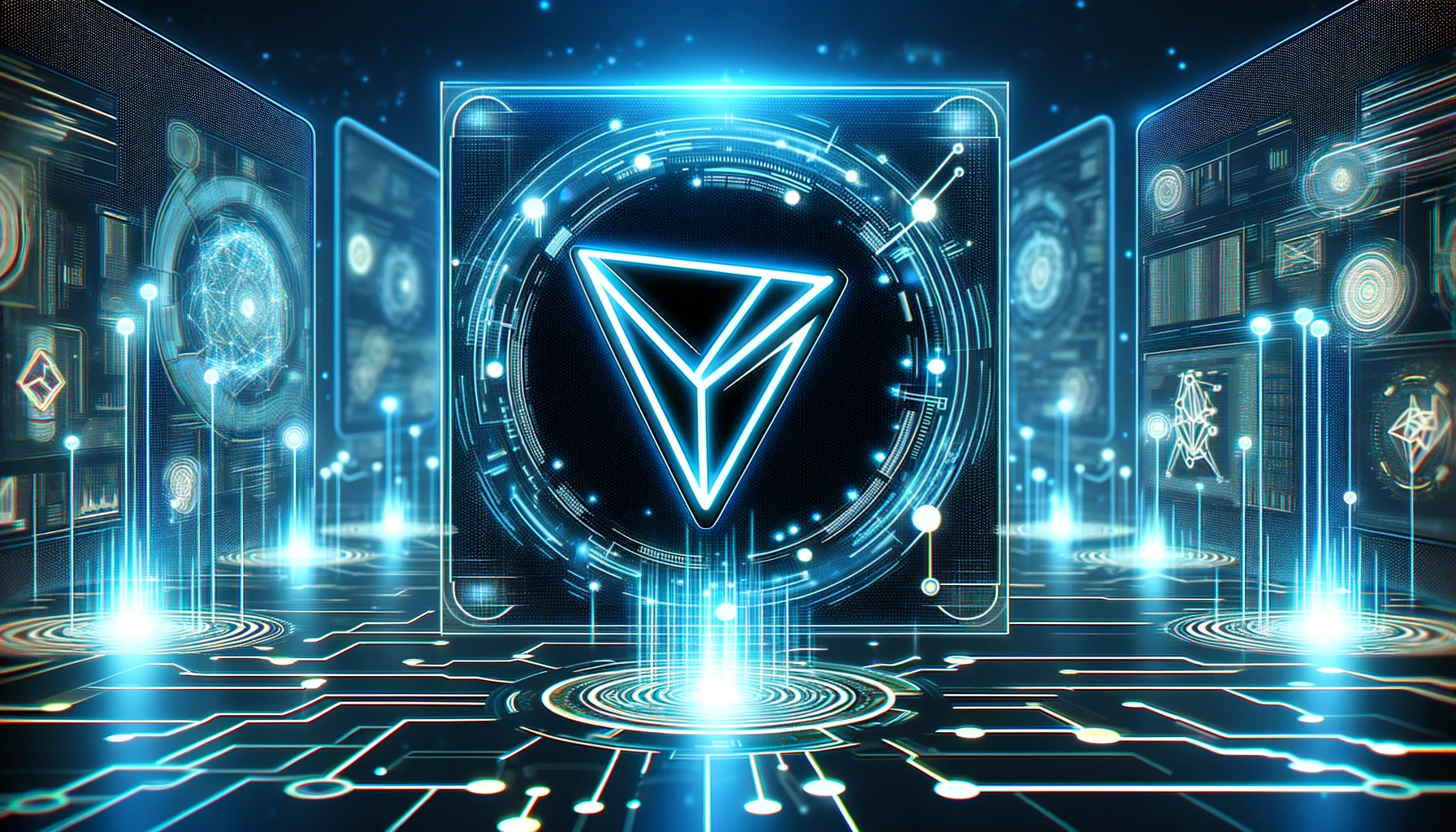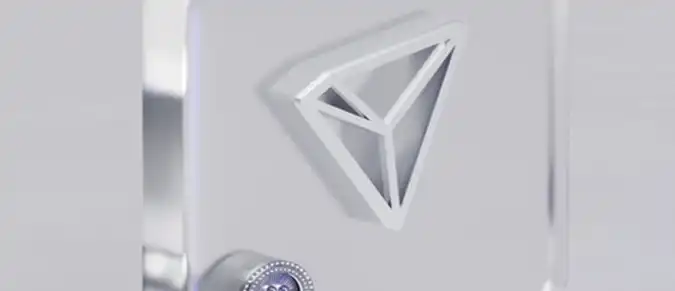Thanks to the use of blockchain technology and decentralized applications (DApps), the TRON (TRX) network aims to contribute to the decentralization of the Internet. This network became a fully community-governed decentralized autonomous organization (DAO) in December 2021. The TRON cryptocurrency, often known as TRX, serves as the main unit of account on the Tron network.
Contents:
- How does the TRON blockchain work?
- Advantages of the TRON blockchain
- How to stake TRON?
- What is the USDD stablecoin?
- How does the USDD stablecoin work?

How does the Tron blockchain work?
The TRON ecosystem is built on a virtual machine called TRON Virtual Machine (TVM). Its goal is to provide a customized blockchain system that is efficient, stable, practical, secure, and scalable. Tokens compatible with TVM are implemented through smart contracts using the TRC-20 technical standard and are fully compatible with ERC-20.
Main features in operation:
- The architecture of TRON consists of storage, core, and application layers. Consensus, account management, and smart contracts are different modules of the core layer. Delegated Proof of Stake (DPoS) is the consensus mechanism used by TRON to achieve consensus.
- The blockchain's consensus method, called delegated proof of stake, allows users to use their currencies to vote for different delegates. Once elected, these delegates have the right to decide important issues affecting the entire network.
- Twenty-seven super representatives (SRs), who are responsible for tracking transaction history in the TRON ecosystem, verify transactions. Every six hours, a super representative is selected who receives TRX coin produced by the mechanism in exchange for their services. A new block is added to the TRON blockchain every three seconds, and those who add blocks receive 32 TRX coins.
- TRON uses an efficient set of instructions and a stack-based virtual machine.
- TRON smart contracts are written in Solidity and other advanced languages.
Witness node, full node, and Solidity node are three different types of nodes in the TRON network. Witness nodes are created by SRs and are mainly responsible for creating and voting on proposals, as well as for creating blocks. Application Programming Interfaces (APIs), transactions, and blocks are broadcast by full nodes. Blocks from other full nodes are synchronized through Solidity nodes, which also offer indexable APIs.
Advantages of the TRON blockchain
The TRON blockchain is unique in that it allows you to share your content with others while getting paid for information and content. In addition, transaction fees in the TRON network are only 0.000005 USD. It is also worth noting that transactions in the TRON network occur incredibly fast, as it supports up to 2000 transactions per second. For comparison, Bitcoin (BTC) boasts three to six transactions, and Ethereum (ETH) allows 25 transactions.
On TRON, developers can create various DApps and unique wallets. Moreover, the possibilities of utility applications are limitless, as TRON allows the deployment and execution of smart contracts.
As for trading, TRX coins are traded between buyers and sellers around the world 24 hours a day, 7 days a week. If you are new to this area, consider learning various cryptocurrency trading strategies before buying TRX.
On cryptocurrency exchanges such as Binance and Kraken, you can purchase TRX using a credit or debit card. On the Binance exchange, you first need to buy one of the listed stablecoins, which can then be used to purchase TRON.

How to Stake TRX?
To stake TRX, you need a cryptocurrency wallet and enough coins to pay the transaction fee.
To stake TRON, follow these steps:
| Step | Description |
|---|---|
| Top up your crypto wallet in TRX | In your cryptocurrency wallet, press the receive button, enter “TRX” in the search bar, select TRON, and copy the address to receive TRX. Use this address to buy TRX and withdraw it via the “TRON Network” from your preferred centralized exchange. |
| Select a TRON validator of your choice | On the main page of the wallet, click on TRX. Then select "Staking" in the pop-up menu by pressing the "More" button. Click on "validator" to choose your preferred validator. |
| Stake your TRX | Enter the amount of TRX you want to stake after selecting the desired validator, press “Continue” and “Confirm”. Your TRX will be staked, and you will start receiving rewards every two weeks. |
Before making any investment decision, you should know the project's background, team, vision, and prospects, as well as your financial goals. Nevertheless, you should also consider the risk and return for your potential investments.
If you invest in any project without due diligence, you could lose your money, especially in a bear market, or face risks you do not want to bear. During a bear market, be sure to review critical parameters or indicators before making any investment decision.

What is the USDD Stablecoin?
The TRON project has created its own stablecoin, USDD. It is pegged to the US dollar at a 1:1 ratio, meaning USDD maintains its value at a fixed exchange rate to the US dollar, with 1 USDD always being equivalent to 1 US dollar.
Justin Sun himself confirmed that USDD would be over-collateralized with a combination of high-quality, low-volatility assets. He also assured that this collateral would consist of assets like BTC, USDT, and USDC. Tron recently promised that a guaranteed minimum collateral ratio of 130% will be maintained at all times. According to the Tron Dao Reserve website, at the time of writing this article, the collateral ratio is just over 200%, with reserves of about 1.4 billion US dollars supporting approximately 700 million USDD in circulation.
How Does the USDD Stablecoin Work?
There are two scenarios for the price to deviate from one US dollar:
- When the price is higher than one US dollar. Imagine a scenario where the demand for USDD exceeds the supply. Market dynamics will cause the price to rise above 1 dollar. To bring the price back to 1 dollar, the USDD protocol temporarily allows users to exchange 1 dollar's worth of TRX for 1 US dollar. This exchange burns 1 dollar's worth of TRX and mints 1 USDD. As more and more users perform these exchanges, the resulting increase in USDD supply gradually stabilizes the price at 1 dollar per token. Note that users have an incentive to actively participate in this process. This is because these TRX to USDD exchanges provide users with an arbitrage opportunity they can use to make a profit.
- When the price falls below the peg. Similarly, if the price of USDD falls below 1 dollar (say, to 0.9 dollars), you can buy 1 US dollar for just 0.9 dollars on the external market. You can then exchange 1 USDD for 1 dollar's worth of TRX. Each exchange results in 1 USDD being burned in the system, which then gradually reduces its circulating supply. Supply eventually falls, and more and more users exchange USDD for TRX. The price then returns to the target level, i.e., 1 dollar. As for your incentives to participate in the process, now you can sell TRX worth 1 dollar to make a profit of (1-0.9 dollars =) 0.1 dollar per exchange.
Note that, typically, the price falling below the peg is a more common occurrence for most stablecoins. This is where the super representatives of Tron will have a major role to play.

Super Representatives (SR) are TRX holders responsible for creating blocks and processing transactions. SRs play an important role in absorbing the price volatility of USDD. The costs they incur are temporary and are compensated by a portion of the token exchange fees.




